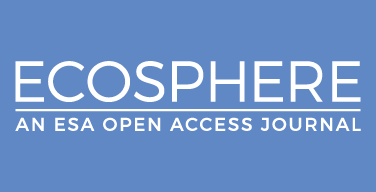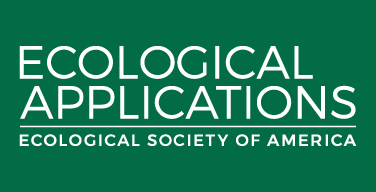
Columbia Professor Shahid Naeem to Head Ecological Society of America
Shahid Naeem, head of the Earth Institute Center for Environmental Sustainability, has been elected president of the Ecological Society of America. Naeem will serve in 2023-2024.

Shahid Naeem, head of the Earth Institute Center for Environmental Sustainability, has been elected president of the Ecological Society of America. Naeem will serve in 2023-2024.

To begin to address the underrepresentation of Native Americans in STEM, the American Indian Science and Engineering Society is teaming with the Entomological Society of America, Ecological Society of America, and Botanical Society of America on a five-year project: Culture Change for Inclusion of Indigenous Voices in Biology

Researchers suggest this behavior plays a greater ecological role than previously known.

Personality differences that account for varying behaviors within species should be taken into account in ecosystem management, according to new research.

Previous fires may hold the key to predicting and reducing the severity of future wildfires in the western United States as fire activity continues to increase, according to new research.

When non-native fish species that are prized by anglers overlap with baby spring chinook salmon in Oregon reservoirs, they consume more salmon fry than native fish per individual, new research finds.

New findings show how genetics, environmental conditions, and their interactions affect tree mortality and regeneration.

Clarkson Biology Assistant Professor Andrew David was recently elected to a 2-year term as Secretary of the Invasion Ecology section of the Ecological Society of America.

Erika Zavaleta, professor of ecology and evolutionary biology at UC Santa Cruz, has been selected as one of four ESA Excellence in Ecology Scholars in the first cohort of this new initiative.

New research provides information on an appropriate level of polar bear harvest that meets cultural needs, while accounting for both climate warming and the health of the Chukchi Sea polar bear population.

New research finds that landscaping and yard management decisions can increase wild bird habitat and influence bird biodiversity at the neighborhood and city scale.

Researchers quantified the percentage of terrestrial vertebrates that call tropical forests home, demonstrating the importance of protecting these ecosystems.

In a new study researchers demonstrated that eelgrass restoration efforts can lead to rapid expansion of restored plots and recovery of ecosystem functions.

Researchers gathered data on watering hole communities over the course of two years to investigate how herbivore activity affects vegetation on the savannas of central Kenya.

A team of international scientists has gained new insights into the diet, population density and social interactions of a group of Brazilian jaguars.

The Galápagos’ simulated future is a warmer and wetter one, which could have cascading ramifications for the archipelago and its inhabitants.

After suffering mass mortality for years due to infection with a deadly chytrid fungus, some frog populations in Panama now seem to be co-existing with the pathogen.

Early fall wildfires in the western states and the smoke they generate pose a risk to birds migrating in the Pacific Flyway, according to a new study.

According to a study published in the journal Frontiers in Ecology and the Environment, there isn’t a widespread upswing of harmful algae blooms in North American lakes.

Domestic cats that regularly catch wild animals still get most of their nutrition from food provided at home, new research shows.
Notifications